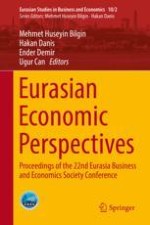This volume of Eurasian Studies in Business and Economics includes selected papers from the 22nd Eurasia Business and Economics Society (EBES) Conference in Rome. It gathers scholarly contributions on the latest applied economics research from developing countries such as Croatia, Poland, the Baltic and ASEAN countries, which tend to be underrepresented in the current literature. Both the theoretical and empirical papers in this volume cover diverse areas of economic research from various regions. The main focus is on sharing the latest findings on empirical industrial organization, in particular the economics of innovation, regional economic development dynamics, and banking sector reforms in developing countries.
